BY J.P. RICH Off The Cuff/ganglandchicagowebsite@yahoo.com
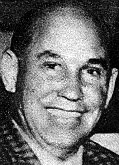 “What the hell, they better be fair . . . Anytime you got anything coming to you, you better get it, right to the penny.”
“What the hell, they better be fair . . . Anytime you got anything coming to you, you better get it, right to the penny.”
So declared old-time gangster James “Jimmy the Bomber” Catuara in 1964 to an associate concerning an unpaid debt. He didn’t know his words were being secretly recorded by an illegal FBI listening device.
More than a decade after making that declaration, rumor had it that Jimmy Catuara was shorting his own mob superiors, not paying the Outfit bosses their full share of the proceeds from rackets he oversaw as a mid-level mob leader.
By the late 1970s, Catuara went back ages with the Outfit. All the way back when he was a kid growing up on Chicago’s Near South Side. He knew full well what the Outfit was capable of. He’d committed horrific crimes himself throughout his 50 years in the mob. His long journey led to where he sat on a summer morning in 1978 — behind the wheel of a red Cadillac, waiting for a friend.
Born in 1905, Catuara (often misspelled Catura) earned his nickname (and his feared reputation) blowing up taxicabs during Chicago’s perennial Taxi Wars of the 1920s and ’30s. In 1933, the 27-year-old up-and-coming mob terrorist was busted for possessing a dynamite bomb.
At the time of his arrest, Catuara was said be working for Near South Side crime lord James “King of the Bombers” Belcastro, who headed Al Capone’s bomb squad in the 1920s during the height of Prohibition Era warfare in Chicago. He was subsequently convicted on that bomb charge and sentenced to serve a 5-to-25-year prison term. He served eight years in Joliet State Prison and was paroled in 1942.
Thanks to that conviction, he became known as Jimmy the Bomber. Through the years, he slowly but surely became a member of good standing with the Chicago Heights crew, based out of the vice-ridden southern suburbs.
Standing 5-foot-5, weighing 160 pounds, and sporting a shiny, horseshoe-bald head, Catuara, who was also known as “the Owl,” didn’t look like much, but looks can be deceiving. He was reputed to be a hitman, was a powerful Mafia leader in northern Illinois, and was recognized as the top street boss of Frank LaPorte, the boss of the Chicago Heights crew.
As a leading disciple of the LaPorte mob, Catuara ran his own crew of tough guys. His fiefdom was based on Chicago’s Southwest Side and stretched into the southwestern suburbs. He and his underlings specialized in the traditional mob staples of gambling, loansharking, and extortion. All the while, the aging mob terrorist would tell outsiders that he made his living as a furniture salesman.
When LaPorte retired in the mid-1960s, some claim Catuara briefly took over the Chicago Heights crew. However, by the close of the 1960s, LaPorte’s former bodyguard and driver, Alfred Pilotto, was the big boss in the Heights and Catuara was again a street boss, reporting to Pilotto. Perhaps Catuara being briefly identified as the boss of the Chicago Heights crew was a simple mistake, just bad information from a snitch.
In the late 1960s, Catuara’s crew began to move heavily into the so-called “chop shop” racket, i.e., stealing cars, disassembling them, and selling the parts on the black market. Fellow Chicago Heights crew member Albert Caesar Tocco had originally gotten the Chicago Heights crew into the stolen-car business, but he got busted for running an interstate stolen-car ring and received a 3-year prison sentence in 1967.
Catuara’s crew was in competition with Al Tocco’s crew until Catuara got the upper hand when Tocco finally went to prison after his appeals ran out. Catuara’s reign in that business lasted several years until Tocco’s parole in 1973. “Lining up” the chop shops for the Outfit was now Catuara’s primary vocation.
Beginning in 1969 and lasting until at least 1980, there were about 20 murders connected to what became known as the “Chop Shop Wars” — bloody battles fought on city streets as the Outfit conquered the chop-shop business throughout the Chicago area, which, for the most part, was concentrated in Chicago Heights crew turf in the southern suburbs.
Chop-shop operators and auto thieves who refused to pay a street tax to the Outfit were killed, people in the business who were suspected of being police informants were killed, rival mobsters eventually turned the guns on each other and still more were killed.
It was Jimmy Catuara who started all of this chop-shop mayhem, but he wouldn’t be around to see it finished.
Within a few years after Tocco’s parole, he and Catuara were locked in a power struggle, allegedly over Catuara’s repeated intrusions into Tocco’s territory.
Law enforcement officers assigned to investigate the chop-shop racket in the Chicago area who couldn’t be bribed were intimidated by the crazed crews led by Catuara and Tocco. Most troublesome was an offensive against the Secretary of State’s Northern Illinois Auto Investigations Unit. In 1973, Lieutenant Vladimir Ivkovich became the commander of that 12-man unit. Within five years, Ivkovich’s life would be a living hell.
One night in early 1978, the rear window of Lieutenant Ivkovich’s squad car was shot out while parked in front of his house in Chicago. That was only the beginning. Two months after that, his car was tampered with — a tie-rod was loosened on the car’s rear axel, which would have caused an accident had he not noticed something was wrong with the car’s braking system as he backed it out of his driveway.
Early one morning a couple months later, Ivkovich was awakened by his barking poodle. He got up quickly, hurried into his kitchen, flicked on the outside lights, and opened his back door. When he opened the door to look around outside, he slid a pipe bomb off the top of the doorsteps. First he heard the clank of metal, then he saw the bomb lying on the ground with a smoking fuse. He immediately grabbed his wife and daughter, and ran out of the house to safety before summoning the Chicago Police Department’s Bomb and Arson Squad.
The bomb was disarmed and Ivkovich was informed by a police sergeant that he was lucky. The fuse was deactivated when the bomb fell off the steps. He was told that there was only a minute’s worth of fuse left. Had it exploded, the bomb — packed with black powder and shrapnel — would have been powerful enough to destroy the back side of his house. It was also pointed out that the explosion could have ignited a gas line running into his kitchen and blown up the whole house as he and his family slept. The alert dog quite possibly saved the lives of the Ivkovich family.
A month after the bombing attempt at his home, Vladimir Ivkovich suffered a gall bladder attack caused by excessive nerve tension and underwent emergency surgery. It took him seven weeks to recuperate before he could return to work and chase after the Outfit’s fearsome enforcers and the chop-shop underworld — and the trail of death, destruction, and misery those parasites of society left in their wake.
Ivkovich wasn’t the only one from the Northern Illinois Auto Investigations Unit who was targeted, either. Three of his investigators also had the back windows of their squad cars shot out while parked in front of their homes and another investigator’s car was set on fire.
In 1979, Ivkovich testified before a Senate subcommittee investigating the chop-shop business.
“My six years as commander of the unit represent the most trying and demanding period of my life,” he told shocked Senators, who listened in disbelief at what he’d gone through just doing his job as an officer of the law.
“Chicago has become the chop-shop capital of the world,” he testified, matter-of-factly.
Despite his family’s opinion that he should resign, Chicago’s chop-shop underworld was unsuccessful in scaring heroic Vladimir Ivkovich into leaving them alone.
At the time of his Senate testimony, Lieutenant Ivkovich was still bravely heading the Northern Illinois Auto Investigations Unit. However, he told the Senators that he had become a very cautious man. He said he now always made sure to search under his car for explosives before going anywhere and that now he not only carried his gun when on duty, but he carried it with him twenty-four hours a day, wherever he went — even when he took his family out to eat.
Things were even worse for Jimmy Catuara by the time 1978 rolled around.
Earlier, in 1977, the Outfit bosses tried to stop the Chop Shop Wars by inserting a beefy hoodlum named Angelo “the Hook” LaPietra as the new overlord of that racket with Al Tocco. The bosses replaced Catuara with LaPietra. They made the move in hopes of stability.
Angelo LaPietra ran the powerful 26th Street crew on Chicago’s South Side. He had a ferocious reputation as one of the most feared and brutal killers in the Outfit.
LaPietra’s newly-selected position was a clear message to those involved in the Chop Shop Wars to stop fighting and tone down the violence. The heat from investigations into that racket was hurting other mob businesses. The mayhem had to come to an end or at least slow down considerably.
Perhaps another reason for Catuara’s demotion were rumors that the Outfit bosses believed Catuara was holding back on some of the chop shop millions. He’d been a loyal Outfit servant for far too long to just have him whacked out like that, however. The bosses didn’t want him dead, but they did want him out of Chicago.
One night, mob enforcers snatched Catuara. They locked him in the trunk of a car for twelve hours. They opened the trunk and looked down at him.
“Now we just gave you a message,” one of them told him. “Why don’t you go to Arizona and retire.”
Catuara was bothered by sinus trouble and already went to Tucson at least once a year to clear out his sinuses in the dry desert heat. The bosses knew this and advised him to stay there permanently.
But Catuara wasn’t the type of guy who would allow himself to be pushed out and into early retirement. He refused to take their advice and leave Chicago. Then a rumor hit the street that he was an informant. Whether true or not, that was the last straw.
At about 7:00 a.m. on July 28, 1978 — just twenty days after the attempted bombing of Vladimir Ivkovich’s house — 72-year-old Jimmy Catuara, now a has-been syndicate kingpin, was sitting in his red Cadillac waiting for a friend at an intersection in an industrial area on Chicago’s Near West Side.
Like an hourglass with a few grains of sand left to fall, time was running out on Jimmy the Bomber. The last moments of his life were about to play out, and they wouldn’t be pretty. As they say, you reap what you sow.
At least two men were watching Catuara from inside a blue van and they decided his time was up. They hopped out of the van, guns in hand. They approached the Cadillac on either side and riddled the old gangster with a volley of bullets. Hit multiples times, he managed to crawl across the front seat and open the passenger door. He collapsed out of his car, falling into a bloody stupor on some overgrown weeds beyond the curb.
As Catuara lay bleeding, face-down on the ground, the gunman on the passenger side shot him one last time in the back. Finally, he lay still. He was hit five times: twice in the head and once each in the face and neck before the finishing shot to the back.
The hitmen ran back to the van and fled. A few blocks away, they abandoned the van for another vehicle. As the hit team melted back into the city, their well-dressed victim lay sprawled out, dead. If only he’d listen to his superiors, he wouldn’t have died the way he did: gunned down in the street.
Jimmy Catuara’s murder — preceded by the slayings of several of his most-loyal crew members — effectively ended the Tocco-Catuara rivalry in the chop-shop business. For many years after that, Angelo LaPietra and Al Tocco ran the whole thing. The murders didn’t stop, but they sure slowed down a lot once Catuara was out of the picture.
By the time of his gangland slaying, Chicago area car thieves were grossing an estimated $44 million and stealing 48,000 cars a year. That equaled more than $120,000 in gross profits a day. The Outfit received a huge chunk of that revenue, many millions a year — all thanks to the cold-blooded efforts of Jimmy “the Bomber” Catuara and other mob terrorists like him.
Copyright © 2010, 2011 | J.P. Rich Off The Cuff. All rights reserved.
Visit GanglandChicagoHistory.com >>>
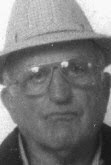 Here is the physical description of the Outfit’s former top boss, Joseph “Joey Doves” Aiuppa, who served in that capacity from the early 1970s until he was sent to federal prison in 1986 for skimming Las Vegas casinos.
Here is the physical description of the Outfit’s former top boss, Joseph “Joey Doves” Aiuppa, who served in that capacity from the early 1970s until he was sent to federal prison in 1986 for skimming Las Vegas casinos. 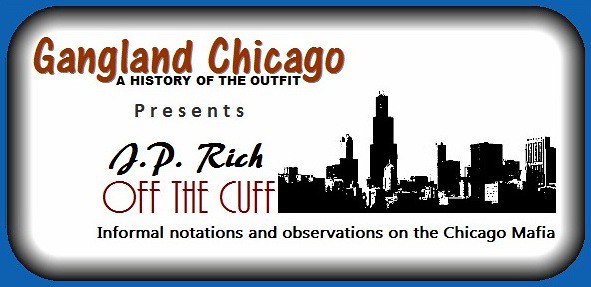
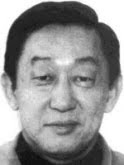 Chicago gangster turn mob rat Ken Eto, known in the media as “Toyko Joe” and by Outfit guys as “Joe the Jap,” was in a Japanese internment camp during the Second World War?
Chicago gangster turn mob rat Ken Eto, known in the media as “Toyko Joe” and by Outfit guys as “Joe the Jap,” was in a Japanese internment camp during the Second World War? “What the hell, they better be fair . . . Anytime you got anything coming to you, you better get it, right to the penny.”
“What the hell, they better be fair . . . Anytime you got anything coming to you, you better get it, right to the penny.”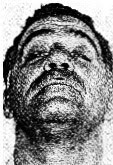 Check out “Tony the Head” here on the left. You can see how he got his nickname. That’s a noggin!
Check out “Tony the Head” here on the left. You can see how he got his nickname. That’s a noggin!